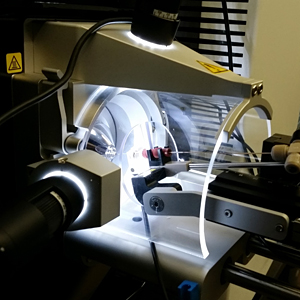
Researchers with the School of Public Health have developed a method for analyzing minute amounts of oxidative damage in eye DNA that is associated with age-related macular degeneration (AMD). AMD has no cure and is the leading cause of vision loss, affecting more than 10 million Americans.
The results of the study proving the method’s effectiveness were recently published in Scientific Reports.
The technique uses liquid chromatography-nanoelectrospray ionization-tandem mass spectrometry and the team that developed it was led by Assistant Professor Irina Stepanov. The team tested the method by analyzing the DNA of mitochondria from the eye’s retinal pigment epithelium tissues in samples taken from healthy eyes and those with age-related macular degeneration. Oxidative damage to mitochondrial DNA in the retinal pigment epithelium is suspected in playing a key role in the emergence of AMD.
“The outcome of these analyses supports earlier indications that oxidative damage to mitochondrial DNA in retinal pigment epithelium is a potentially important mechanism in the development of age-related macular degeneration,” says Bin Ma, a research associate in Stepanov’s laboratory who developed the new methodology. “Our study provided a unique tool for future research in this field.”
This new, extremely sensitive method was needed because retinal pigment epithelium yields only 10-50 nanograms of mitochondrial DNA making it difficult to accurately analyze.
Stepanov said this new method can be used for the analysis of DNA from other tissues or from blood as well, which opens new opportunities for future investigations of this oxidative damage in other studies.
“We are planning to analyze additional samples of eye tissues with and without age-related macular degeneration, to confirm the initial indications from this study,” says Stepanov. “This research can help to better understand the role of oxidative mitochondrial DNA damage in age-related macular degeneration and potentially lead to the development of new preventive and treatment strategies.”

